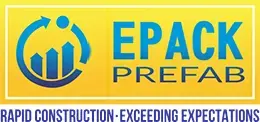With each passing year, energy efficiency and sustainability become more and more important for our planet and for our homes. Higher and higher energy use has a bad effect on the environment around the world, but closer to home, higher energy use can cause our monthly energy bills to be out of control.
Professional studies have shown that more than 30% of customers in 2021 made a conscious effort to adopt a more sustainable way of life through the things they bought. At the same time, the cost of gas, coal, and electricity went through the roof in the second half of 2021 and into 2022 because of problems with logistics and supply in the power industry around the world.
If you haven’t been taking power performance into account when deciding what to buy, now is a great time to start. If you are planning a building project, you should think about the long-term benefits of using steel for your building.
The money you save on your monthly energy bills could add to the money you save over time on a house that was already cheap to buy.
Let’s look at how energy-efficient steel buildings are and how this can help you save money each month on your heating and cooling bills.
How do metal buildings help save money on home energy costs?
Even though making steel is already a very long and getting longer process, using it as a building material makes it much more efficient for the end user, which is you.
We’ll talk about two important ways that steel can save you money on your monthly cooling and heating bills: its natural ability to reflect light and the ease with which advanced insulation can be installed to further stop heat transfer. We’ll also look at a third optional way to make your steel structure more energy-efficient.
Steel Mirrors Solar Energy
Steel is naturally reflective, which makes it great for saving energy and keeping out both extreme heat and cold.
Because steel is reflective, the roof of your metal building actually helps keep the temperature inside the building at a comfortable level. In warm weather, especially, a steel structure will usually stay cooler than, say, a wooden structure. This is because the sun’s energy is being shown instead of being stored and then transferred. This means that in the summer or if you live in a warm climate all year round, you’ll spend much less on air conditioning costs because the inside of your steel building will stay cool even on the hottest days.
Steel is almost as good at keeping heat inside during the winter as it is at blocking heat from the outside during the summer. Steel is still a great insulator for both heat and cold, but it is much better at keeping heat out than it is at keeping heat in. To learn more about why steel is a natural insulator, check out our blog post on the subject by clicking here.
The good news is that it’s easy to make sure your steel building stays warm when it’s cold outside.
Choices for Insulation
Steel gives you a lot of options for adding extra insulation to your building.
Choosing the best insulation for your building can be hard, so it’s best to talk to one of our building experts for help. First of all, it’s important to know that what you use your building for and where you live have a lot to do with what kind of insulation you should use. To meet Canada’s power code requirements, you will need to think about your critical area. When you go to the licence office to get approval for your project, they often have strict rules that you have to follow. Talking to a member of our team to figure out which package is right for you will not only make sure that the temperature in your building is well-controlled, but it will also make sure that your insulation package meets the requirements of the licencing office for your area or district.
There are four main types of insulation used in metal buildings: glass wool (also called “Fiberglass”), mineral wool, rock wool, and rock wool.
Spray foam (ask the company that made your steel building if this kind of insulation is right for your building); Polyisocyanurate (sometimes called “Poly-iso”) rigid board insulation.
These are some good options for insulating Pre-engineered buildings that you might want to think about. EPACK Prefab has been making end-to-end PEB solutions for more than 24 years. If you need something, feel free to get in touch with us.











